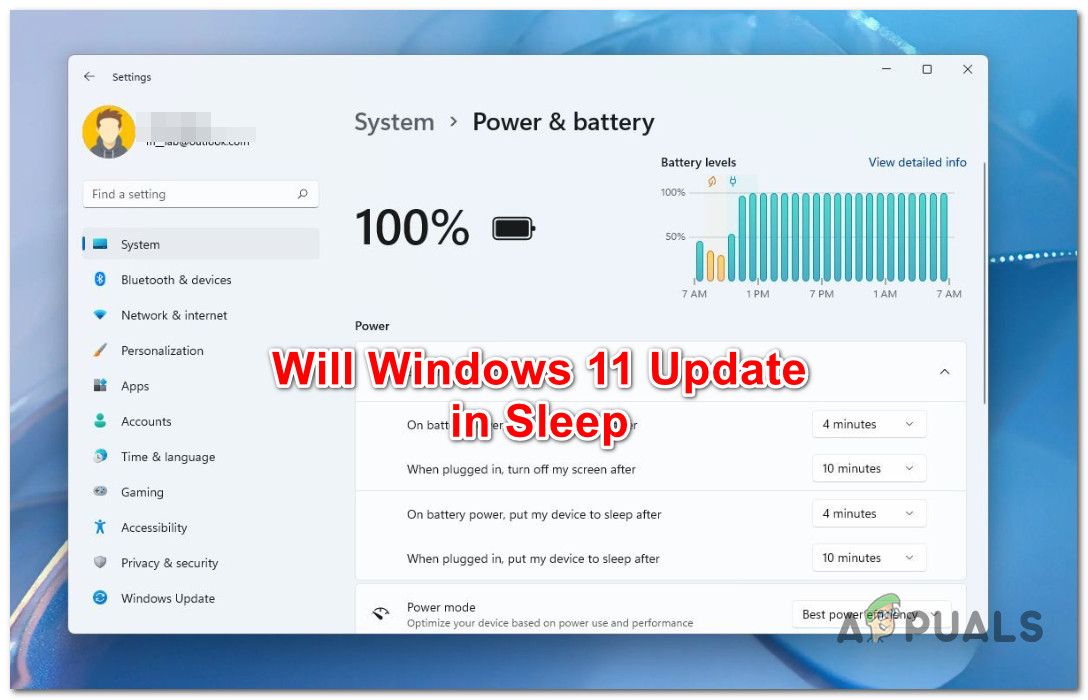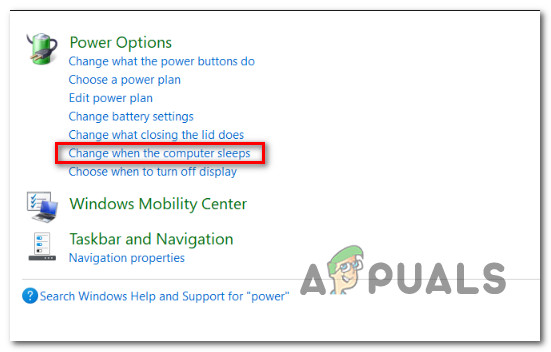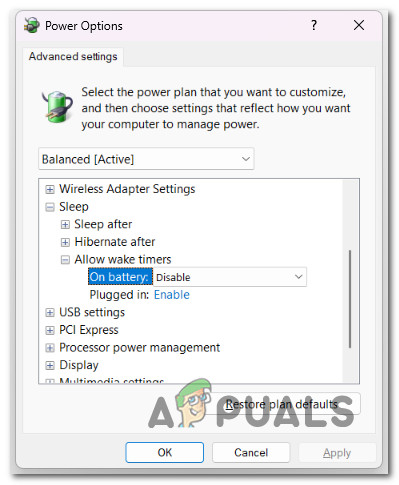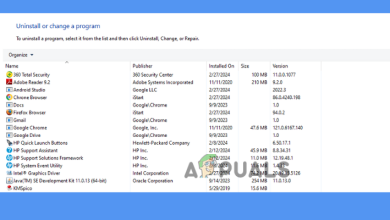Will Windows 11 Update in Sleep Mode? Modern Standby Explained
Over the years, Microsoft has started to get more aggressive with applying updates. This is not a problem for most users, however, as you can still create a schedule of ‘active hours’ even if you have less control overall.

However, with all these changes, it’s unclear what the default update behavior is when Windows 11 is in sleep mode. Will Windows update a PC that is asleep or will it wait for the PC to wake up? It’s complicated, but we’ll explain everything.
Modern Standby (S0) vs Sleep Standby (S3)
Windows 11 replaces the legacy Sleep Standby (S3) mode used up until early builds of Windows 10 with a newer sleep state called Modern Standby (S0).
Because modern standby is used when you put your Windows 11 to sleep, you’ll notice quicker transitions between power states similar to smartphone devices.
Note: When an Android or iOS smartphone is awakened, it is immediately operational. Your email, text messages, and notifications remain up-to-date because, even when your phone is asleep, it is still connected and updating itself, without significantly impacting its battery life.
Modern Standby is an initiative by Microsoft to add instant-on capability to Windows computers.
In this sleep mode, your Windows 11 machine is kept awake with little power consumption in order to do duties in the background, such as synchronizing email and Internet notifications, etc.
Similar to a smartphone, it has an instant on/off capability that allows for a quicker transition between the on and off states.
On the other hand, Modern Standby is apparently creating overheating and battery-draining concerns, forcing some laptop users to disable the modern standby power option.
Note: Due to the nature of Modern Standby, which demands constant CPU participation, a minor CPU temperature increase is also anticipated.
Another effect of using modern standby is that any pending Windows updates can get installed while your PC is ‘sleeping’.
How Windows 11 Deals with Updates while in Legacy S3 Sleep
If you disabled Modern Standby on Windows 11 and you’re using Legacy S3 Sleep, the behavior will be different.
When you put your PC to legacy sleep, it will automatically save your current system state and use the memory (RAM) to preserve this state for when you wake it up.
Note: When your PC is in a sleep state, it is not completely shut down. It actually goes into a low-power mode where only the RAM sticks receive power, while every other component is deactivated.
Now, what happens to your PC if it’s ‘sleeping’ when a new update is pushed depends on two things:
- Wake Timers – Think of wake timers as ‘alarm clocks’ of sorts that have the ability to wake up your PC when certain pre-defined conditions are met.
- The active power profile – This is the power profile that is actually in use when the PC is put to sleep.
If you’re using an ultrabook, a laptop, or a Windows 11 tablet with a battery, wake timers can be disabled while the system is not plugged into a power source.
If you disable the wake timers, your PC will not wake up even if a new Windows 11 update becomes ready to install. This is useful if you want to prevent a situation where your laptop or ultrabook wakes up and consumes the battery while it’s stuffed in a bag.
Important: By default, wake timers are automatically enabled when your PC is plugged into a power outlet and disabled while it’s running on battery power. If wake-up timers are enabled, your PC will wake up whenever a new Windows Update is available or when an antivirus sweep or drive scan needs to be performed.
In case this default behavior does not suit you or you previously tweaked these settings and you don’t know how to revert, continue reading for steps on preventing your Windows 11 PC from waking while in sleep.
How to Prevent Windows 11 from Waking Up your PC from Legacy Sleep to Install Windows Updates
To disable, enable or tweak wake timers, you’ll need to use the legacy control panel UI to access the Power Options menu.
Important: You will not be able to adjust wake-up timers from the Power & Battery tab of the Settings menu.
Here’s a quick guide on using the legacy control panel interface to prevent Windows 11 from waking up your PC from sleep:
- Press the Windows key + R to open up a Run dialog box.
- Next, type ‘control.exe’ inside the text box, then press Ctrl + Shift + Enter to open up the classic Control Panel menu.

Open the classic Control Panel menu - At the User Account Control (UAC), click Yes to grant admin access.
- Inside Control Panel, use the search function (top-right section) to search for ‘power’ and press Enter.
- From the list of results, go under Power Options and click on Change when the computer sleeps.

Change when computer sleeps - Inside Edit Plan Settings, click on Change advanced power settings.
- When you see the Power Options pop-up, click on the + icon associated with Sleep.
- Extend the Allow wake timers menu.
- Now, depending if you have a desktop or laptop, you will either see one or two options here.

Configure the Wake-up timers Note: If you’re on a desktop, you will only see one sub-option here since you won’t need to establish a behavior for when your PC is on battery power.
- Here’s a list of all sub-options (under Allow wake timers) that you can enable or disable and the effects they’ll have on your system:
- Disable – When this setting is active, your PC will not wake up from sleep under any circumstances.
- Enable – When this setting is active, your PC will wake up from sleep for any pending task, including low-priority ones. This includes scheduled AV scans and system checks.
- Important Wake Timers Only – When this setting is active, your PC will only wake up from sleep in scenarios where there’s a major Windows computer event. This includes a major WU update that needs to be followed up with a reboot and WU hotfixes that are being pushed to fix an unintended consequence.
- Once you’ve configured the behavior for both Plugged-in and On Battery (if applicable), hit Apply to save the changes, then reboot your PC.
Note: If you want your PC to wake up every time there’s an important Windows update, go for Important Wake Timers Only.
Will Windows 11 Update in Hibernation?
The short answer is NO. Hibernation doesn’t allow the same amount of flexibility as Sleep.
Note: Hibernation is a more aggressive version of sleep that uses the local HDD or SSD to save the current system state and make it readily available for when the user ‘wakes it up‘. The key difference is that the PC is completely powered off while in hibernation.
Keep in mind that while every PC configuration supports sleep, not every motherboard is capable of hibernation. If you want to control the way your PC behaves when in a low-powered state, sleep is your only real option.





